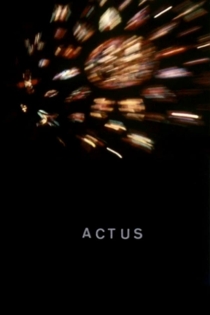
Alain Mazars
2021Rouges Silences
Alain Mazars
Anne Marie Arrignon, Michel Conversin
Here the codes are both amplified and distanced by an expressionist plastic that for the first time perhaps in Expressionism, takes humor into account. Some very close-ups of flowers, insects, are reminiscent of the prose of a Caillois that I did not know until this film equivalent cinema. There is a double movement in this film. At the same time, a sort of restraint of the plans and a bulimia, a frenzy to film, perhaps this is what mainly troubles us and takes us into a way of seeing that was unknown to us.
Rouges Silences
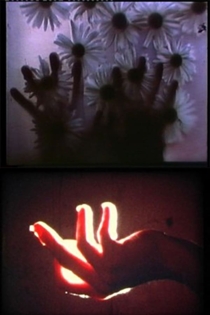
Tout un monde lointain
Alain Mazars
The action takes place in Burma. Thiri, who dreams of becoming a writer, falls in love with a European traveller. Momo thinks he can read the mind of a mysterious Western hermit who looks like Christ. Ada, because she is in love with a monk, is ready to become a nun. Through the intertwined paths of those three female characters, this movie depicts the reality of Burma now, an Asian country undergoing major changes and facing the Western world.
Tout un monde lointain
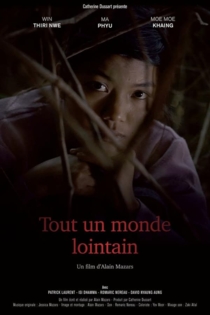
Ma sœur chinoise
Alain Mazars
Jean-François Balmer, Alain Bashung
In 1977, one year after Mao died, a French man ( played by Alain Bashung) comes back to China to work as a school teacher with his daughter. He quickly ignores the interdiction of getting in touch with Chinese people and finds himself drawn into mysterious meetings at the Red Pavilion. MY CHINESE SISTER is a movie about pretense and the mystification of reality.
My Chinese Sister
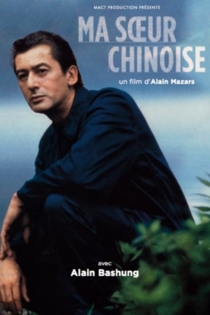
Printemps perdu
Alain Mazars
Chinese opera, whether of the Peking variety or not, is a very demanding art-form, requiring decades of study to be even partly mastered. In this film, Yan Yuejun was a Soochow Opera performer who fell afoul of the Cultural Revolution in the 1960s, and who has served his time undergoing compulsory "re-education." Now he is living in Inner Mongolia, driving a truck for a living, which is surely proletarian enough to suit his earlier tormentors.
Lost Springtime

Phipop
Alain Mazars
The narrator looks for Khema, a missing shaman singer in Laos. His investigation progressively becomes an initiatic travel among outcasts, renowned for their magical powers, accused to be "phipop", supernatural creatures behaving like vampires, still terrifying laotian villagers. This traveller's diary in search of ghosts through the forests, is a true story which looks like a chamanic tale. For most Laotian people, the invisible world of spirits is more real than what we call reality in modern western life. This film shows this "other laotian reality", mixing rational and objective facts with events born from collective unconsciousness. Is it a documentary or fiction ? This question is the main theme of the film.
Phipop
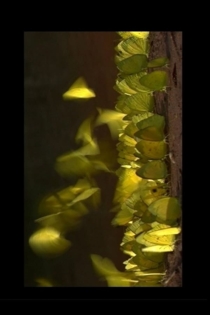
Au-delà du souvenir
Alain Mazars
In 1967, in the middle of the Chinese cultural revolution, an opera singer is sent to the other side of the country to be "re-educated". He leaves behind his young pregnant wife. Seven years later, rehabilitated, he is allowed to return to his native village. He will not find his wife, who has since died. And one thought obsesses him: How to recognize his child, whom he has never seen, how to go to meet him?
Au-delà du souvenir

La moitié du ciel
Alain Mazars
Caroline Silhol, Bing Yin
Anne Laugel, a young divorced woman, mother of a ten-year-old girl, Sophie, travels to China to adopt a baby. She is convinced, as a good Westerner, to carry out this adventure for the happiness of the new born, her daughter and hers.
Half of Heaven

Stagnation
Alain Mazars
Carole Peppermint, Sylvie Peppermint
A girl uses spiritualism to escape her loneliness and neurasthenia. Inspired by practices more or less close to magic, she tries to create two characters that will be part of herself. She will be able to live without being alone, while fleeing the external reality. But little by little, the two beings that she created appear to be detached from her, as if the figure three could not agree to the harmony of the group. Her fantasies seem to turn against her, increasing her sense of isolation.
Stagnation
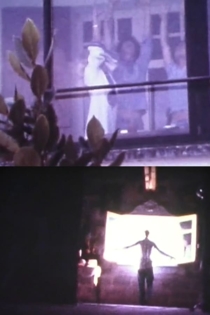
Souvenirs de printemps dans le Liao-Ning
Alain Mazars
Experimental diary shot in 1978-1979 when Alain Mazars was a volunteer teacher in China, 2 years after Mao's death. We see a few pictures, by candlelight, and they flash before our eyes quicker and quicker, before becoming mental images, an entanglement of memories coming from a mind that was asleep until then.
Memories of Spring in Liao Ning
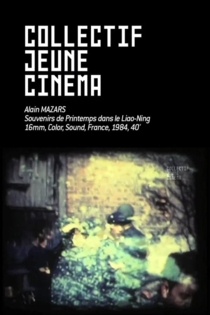
Rodamorfosis
Alain Mazars
"Shot in Madrid, in a carnival. The subject of the film is suggested by the spanish title. From "roda", I kept 2 connected meanings : the circular motion and movie shooting. As for "Morfosis", it is linked to the idea of metamorphosis. With the whole word, I wanted to suggest a metamorphosis of reality (places and characters) in a motion where everything is going round circles : what is on camera, camera itself and film inside."
Rodamorfosis

Une histoire birmane
Alain Mazars
Two parallel narratives. The first follows a present-day investigation by a group of Burmese through Mandalay, Maymo, Myaungmya, Twante, Syriam, Insein, Moulmein and Katha, where from 1922 to 1927 the most celebrated Western writer in Myanmar, George Orwell, worked as a policeman for the British Empire. The second narrative mirrors the first in the here and now : a journey into the land of fear, where the protagonists are the Burmese, Orwell and today's Western world. Having just taken a step toward escaping the hold of dictatorship, the characters of this film begin to give new meaning to their own lives, as if the reading of the English author's major work "1984" has had a revelatory effect on them. It is in this Burma, which we know to be governed by magic and spirits, that Orwell's ghost and the incarnation of the characters from his beacon novel are conjured in this film.
Une histoire birmane
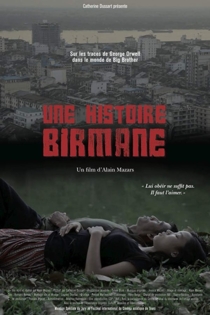
Le Jardin des âges
Alain Mazars
This film from the human fascination with immortalié stone, described by Roger Caillois in his book STONES. A cult of the stone has a long history in Asian countries like China and Japan. Moving from the mountain to the sea, the film unfolds like a dream incantatory which is the theme: In China, a mountain of Tséchouan, it is said that there was once a stone that had children. Beyond their age difference and the distance between them, those who dream of one stone are in constant contact. Fascinated by the same stone, their thoughts, their gestures, their desires end up merging. One day they will be reunited in a garden called the Garden of the ages. It describes the garden as the meeting in the same place and the same time the four seasons of life: the birth of spring, summer childhood, fall of man becomes an adult, the old man winter. This garden is both in and out, like a large house containing its own garden.
The Garden of Ages

Des enfants et des ruines
Alain Mazars
It is an experimental film where the filmmaker questions the desire of a film viewer to narrate. This film revives the spirit of research that began with silent cinema, with musical compositions as essential as the dialogue in a feature-length talking film. The ruins of the title visually represent an aspiration to rebuild another world from the old. Finally, the film questions the possibility of a child proceeding to this reconstruction from a narrative where the elusive meaning of everything around him is to be reinvented
Children and ruins


